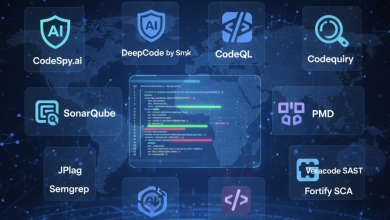
Car accidents bring stress and uncertainty. But AI is stepping in to simplify the claims process. These technologies are reshaping how insurers evaluate claims, respond to policyholders, and even detect fraud.
AI isn’t perfect, as models can drift, and some claimants may face underpayments. Yet when used thoughtfully, it speeds up resolutions and promotes fairness. Stick around as we explore four specific ways AI is changing auto accident claims right now.
Using Computer Vision for Faster Damage Assessments
AI-powered computer vision tools now estimate repair costs in seconds. Uploading accident photos allows these systems to analyze damage, compare it to millions of similar images, and provide accurate cost predictions.
This significantly speeds up claims processing by reducing the need for manual inspections. For example, a fender bender might be assessed entirely through image recognition without waiting for an adjuster’s review. Since repair costs have risen by 4.1% annually every year for the past decade, this is an important area to consider.
However, AI isn’t flawless, as it may overlook hidden damages, such as internal frame issues. Regularly updating training datasets helps maintain accuracy while improving trust between insurers and policyholders during this streamlined evaluation process.
Leveraging Telematics to Evaluate Driving Risk
Telematics collects data from in-car devices or apps to assess driving habits, including speed, braking, and cornering. Insurers use this information to assess accident risk and determine premiums.
Following a crash, telematics helps reconstruct events, clarifying liability disputes or disproving false claims. For instance, data showing sudden deceleration before impact could verify the policyholder’s account of an unavoidable collision.
But over-reliance on telematics raises privacy concerns and may penalize occasional mistakes unfairly. Balancing transparency with accurate analysis ensures drivers feel treated fairly while allowing insurers to manage risks effectively.
Enhancing FNOL (First Notice of Loss) with Conversational AI
Conversational AI streamlines the claims process by guiding policyholders through the First Notice of Loss (FNOL) reporting process. Using chatbots or virtual assistants, drivers can report accidents at any time, without waiting on hold.
These tools collect critical details, including time, location, and incident description, and even recommend next steps, such as uploading photos. They ensure accuracy by prompting users to clarify vague responses.
For example, a chatbot might ask follow-up questions about weather conditions or vehicle damage. While convenient, conversational AI must prioritize accessibility for non-tech-savvy users to prevent frustration. A well-designed system improves claim intake efficiency while ensuring all voices are heard.
Fraud Detection: Identifying Red Flags in Claims Data
AI is used for fraud detection in various industry contexts, including finance. For auto accident purposes, it enhances fraud detection by analyzing patterns across claims data. It flags anomalies like exaggerated injuries, staged accidents, or inconsistent accounts. Machine learning models compare new claims to historical fraud cases for quick identification.
For instance, a claim listing identical repair costs as those of multiple past fraudulent claims might trigger further investigation. This protects insurers and policyholders from premium hikes caused by dishonest activity.
However, overreliance on AI can wrongly flag legitimate claims if training data isn’t diverse enough. Human oversight remains critical to balance efficiency with fairness, ensuring honest claimants aren’t unfairly penalized by automated decisions.
Avoiding Underpayment Issues in AI-Driven Evaluations
AI sometimes undervalues claims, especially when assessing injuries or non-visible damages. Rigid algorithms might overlook personal impact factors like pain, recovery time, or long-term limitations.
If a claim seems underpaid due to automated processing, working with specialists in auto accident law at The Weinstein Firm will help. They advocate for fair compensation by challenging assessments and presenting overlooked details.
Policyholders should document injuries thoroughly and request human reviews when necessary. Combining strong legal support with clear communication ensures claims reflect actual losses while highlighting the need for continuous AI improvement to better serve individuals’ unique circumstances.
The Challenge of Model Drift and How Insurers Can Respond
AI models lose accuracy over time due to model drift, where real-world changes outpace outdated training data. This is a problem that impacts various areas, including real estate, as well as auto insurance claims. For example, new car materials or repair techniques might skew damage estimates if not included in updates.
To counter this, insurers must regularly retrain models using recent data and diverse scenarios. Robust monitoring systems help detect performance drops early, ensuring reliable predictions.
Additionally, combining AI with human expertise mitigates risks. Adjusters can cross-check unusual outputs or adjust for overlooked variables. Proactive measures maintain trust in AI-driven claims processes by delivering consistent results even as conditions evolve.
Final Thoughts
AI transforms auto accident claims by streamlining damage assessments, improving risk evaluations, and detecting fraud. When paired with thoughtful oversight, it offers faster resolutions and fairer outcomes.
However, maintaining trust requires addressing pitfalls like underpayment or model drift. Continuous improvement ensures these tools benefit both insurers and claimants effectively over time.




